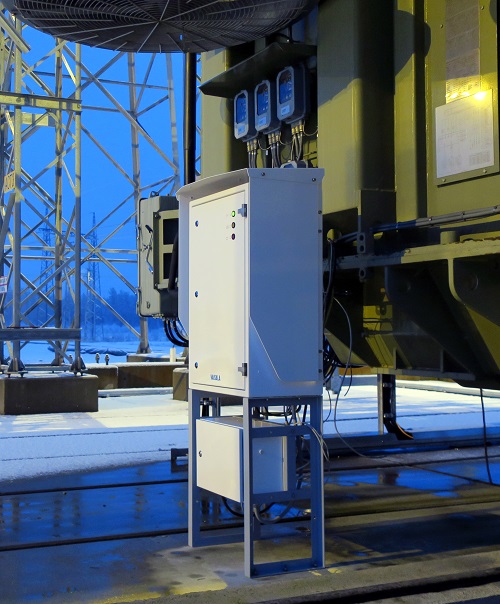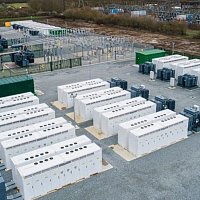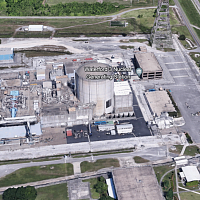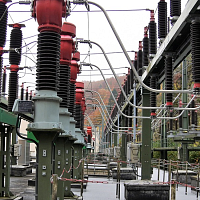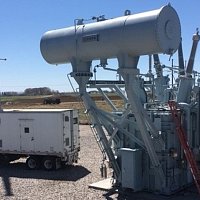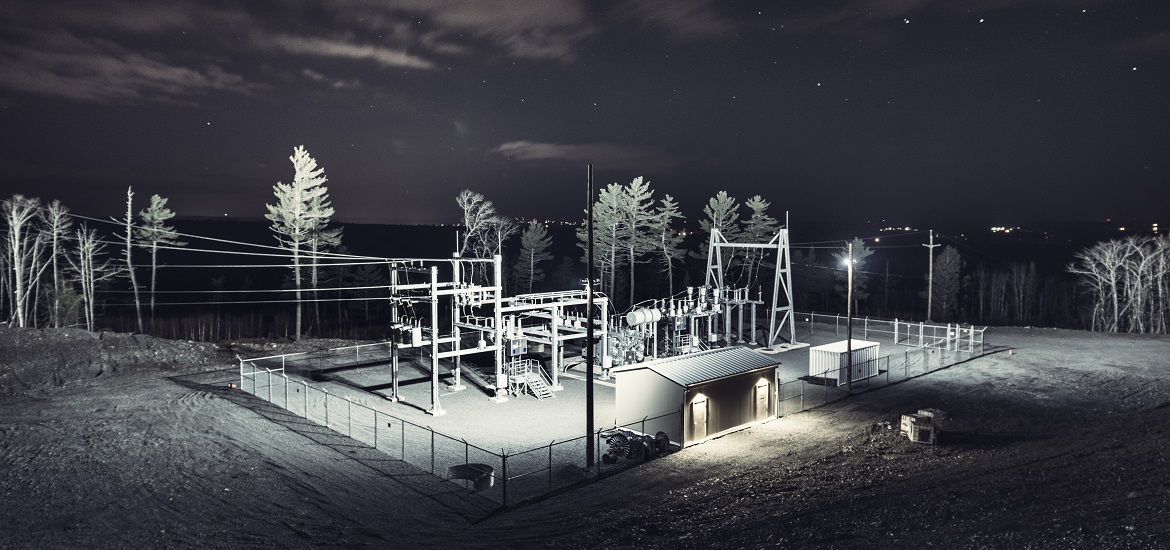
MEASURING TOTAL GAS PRESSURE
A transformer’s lifetime is determined in large part by the condition of its solid insulation. The presence of oxygen in transformer oil accelerates ageing of its solid insulation, most importantly the paper within its windings. With increased use of sealed transformer designs, the issue of air leaks as a source of oxygen has grown in importance.
Air leaks into the transformer are often caused by embrittlement of gaskets or the rubber bag. Therefore, monitoring and confirming proper sealing against ambient air ingress is crucial to maximizing your transformer’s operational life.
Shortcomings of Traditional Methods
Traditionally air leaks have been detected by measuring oxygen and nitrogen from standard DGA oil samples. However, the challenge with sampling at the transformer site, followed by transportation and handling of the samples, is the risk of contamination from ambient air. Such contamination can be identified by observing nitrogen level fluctuations in DGA results over extended periods of time (Figure 1).

Figure 1. (left) Nitrogen and oxygen measured in a laboratory from DGA oil samples of a sealed transformer 1990-2008.
Figure 2. (right) Nitrogen and oxygen data from a PAS based DGA monitor compared against laboratory (lab) references.
Some online monitors have integrated oxygen measurement and nitrogen levels are calculated based on the oxygen values. However, these calculations assume that the oil is saturated to ambient air with a constant oxygen-nitrogen ratio. It is imperative to take into account that such calculated nitrogen values are valid for free breathing transformer only — but not at all valid for sealed transformers.
Figure 2 compares data from a photoacoustic (PAS) based DGA monitor against laboratory reference results. The data reveals that the calculated nitrogen values from the online monitor show significant bias compared to laboratory measured values. This is due to the transformer being sealed, that is, not exposed to ambient air. Worse still, the large fluctuation in data over 18 months makes determining possible diffusion of air into the transformer tank very hard.
The example in Figure 3 compares an online gas chromatograph (GC) based DGA monitor against laboratory-measured references. Although the readings are closer to the reference values, a well-defined trend cannot be determined.
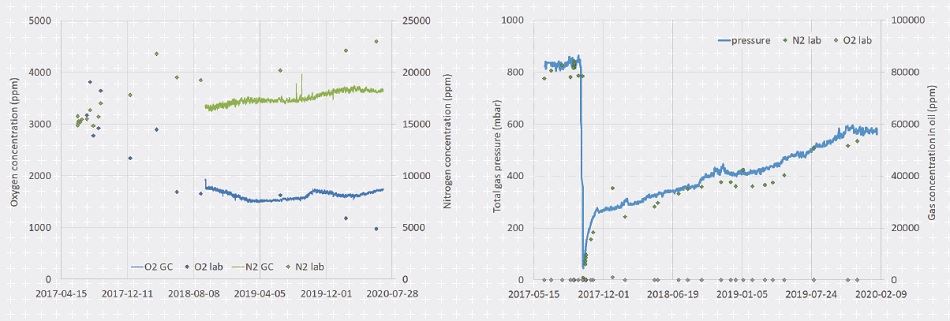
Figure 3. Nitrogen and oxygen data by a GC based DGA monitor with laboratory (lab) references.
Figure 4. Total pressure of gases measured with the Vaisala online DGA monitor OPT100 and laboratory (lab) defined nitrogen and oxygen.
Figure 4 shows pressure data from a Vaisala OPT100 on a sealed transformer with a pre-identified air leak issue. Prior to degassing (October 2017), the oil was saturated to ambient air. The total pressure of dissolved gas was 800 mbar, equivalent to partial pressure of nitrogen in air. All oxygen entering the system was consumed simultaneously. As can be seen from the graph, the pressure value mirrors the laboratory-measured nitrogen concentration. The laboratory in question has exceptionally good reproducibility, which makes comparing the two parameters easy and reliable. Since degassing, air had leaked in again, resulting in 75% saturation to ambient air nitrogen in the oil.
A New Method: Measuring Total Gas Pressure
The Vaisala OPT100 DGA monitor uses partial vacuum to extract gases from the transformer oil. It also includes a pressure sensor, which makes it possible to determine the air leaks by measuring total gas pressure (TGP).
Total Gas Pressure is the sum of the partial pressures of all gases dissolved in the oil. In case of an air leak into the transformer tank, the largest portion of gases would be nitrogen and oxygen. Both can be completely extracted from oil, because of their poor solubility.
The proportion of fault gases in the total pressure value are negligible. Even if all oxygen had been consumed, the pressure value would give a reliable indication of a leak.
A leak can be identified this way because the nitrogen value will both dominate and increase over time as it is neither formed nor consumed in the transformer.
Figure 5 highlights a new, sealed transformer. The total pressure of dissolved gases forms a practical quality control measure. When commissioning a new transformer, its tank is filled with dry oil, degassed in a vacuum. This means that the gas pressure at the point of energizing the transformer will be very low (<100 mbar). If that is not the case, it can be assumed that there may be an issue either with the sealing or with the commissioning process itself. It is likely that in any case there will be a slight increase in gas pressure during the first few weeks after commissioning as gas, nitrogen, or dry air, trapped in solid insulation dissolves in the oil.

Figure 5. Total pressure of gases in the insulation oil of a brand-new transformer as measured with the Vaisala OPT100 online DGA monitor.
Figure 6. Total pressure of gases in the insulation oil of a 29-year-old transformer measured with the Vaisala OPT100 online DGA monitor.
A well-sealed transformer will maintain low levels of gas pressure for a long period of time, up to the full lifetime of the transformer. This can be seen in the example in Figure 6, which shows data collected with a Vaisala OPT100 from a 29-year-old 100 MVA transmission transformer. Remarkably, the oil in this particular transformer had not been treated since its commissioning in 1989. The total gas pressure is low and remains stable at about 250 mbar, representing 25% ambient pressure.
Total Gas Pressure — Proving Its ReliabilityGiven that oxygen and nitrogen are not relevant parameters in the standard transformer fault diagnostics methods, their actual concentration in oil is not needed online — only information on whether oxygen has access to the tank.IR technology cannot measure oxygen and other technologies such as electrochemical cells are typically not long lasting. In response, Vaisala has developed a new, reliable and intuitive air leak detection method based on pressure measurement.Some laboratories report a parameter referring to all dissolved gases e.g. total partial pressure in relation to ambient pressure. This is comparable to the new total gas pressure parameter, considering also the differences in conditions where the values are defined.The latest IEEE C57.104 standard and CIGRE TB771 consider the oxygen-nitrogen ratio in respect to typical values of fault gases in transformers. The ratio is only used to distinguish sealed units from free breathing ones. This approach was used to evaluate a large database where the transformer design information was mostly absent.Oxygen and nitrogen measurements as such have no diagnostics value and are not necessary parameters in online monitoring. More crucially, the oxygen-nitrogen ratio is not a good indicator for air leaks either, as oxygen may be consumed in the transformer and thus remain at a low value even when new air is constantly leaking in.As per the standard, it is not possible to say if the transformer is a sealed or free-breathing one by looking at the oxygen-nitrogen ratio of a specific sample, as factors such as sample contamination can influence this ratio.Total Gas Pressure gives a direct and intuitive indication on the design: pressure values that are stable and clearly below ambient pressure tell us that a transformer is sealed. TGP at ambient levels is an indication that the transformer is a free-breathing one or one with a severe air leak. And finally, TGP values at 100-200 mbar above ambient are typical for nitrogen blanketed transformers.
|





